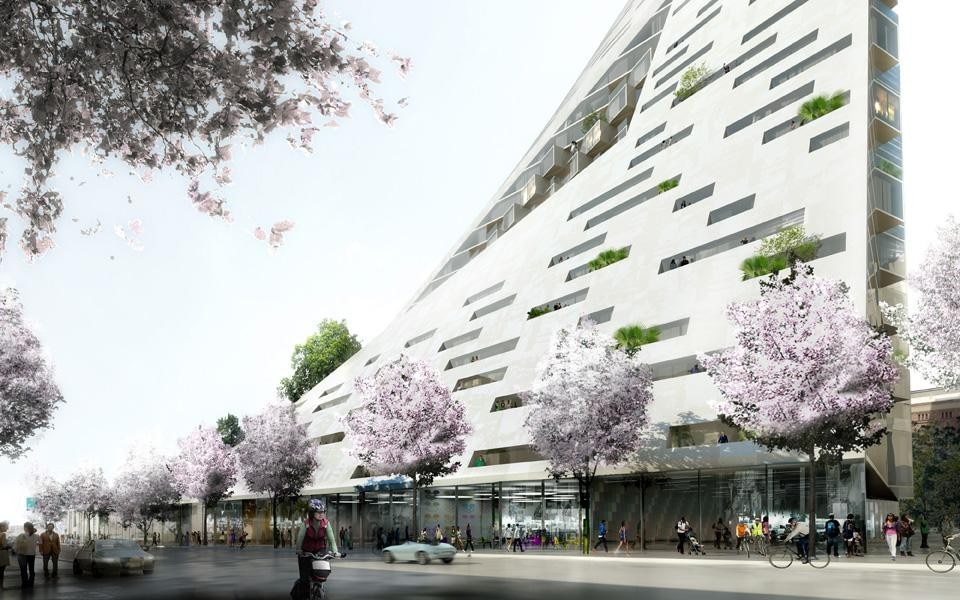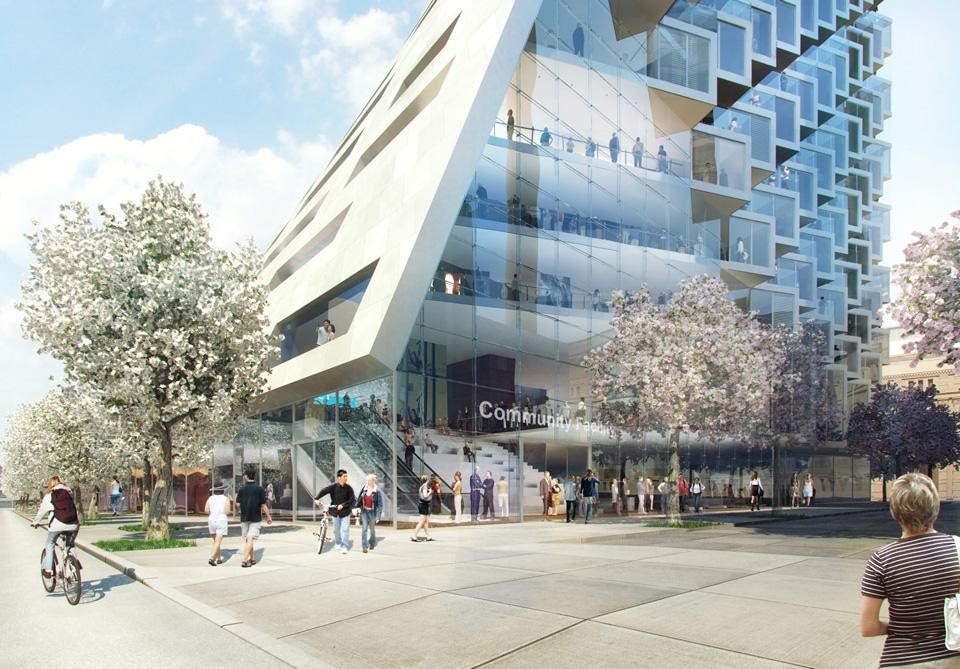Durst Fetner Residential (DFR) yesterday announced the design of West 57th, a 600-unit 80/20 residential building on West 57th Street between 11th and 12th Avenues. The building is designed by renowned Danish Architect firm BIG-Bjarke Ingels Group and is their inaugural North American project. The building's program consists of over 600 residential units of different scales situated on a podium with a cultural and commercial program. The building will strive for LEED Gold Certification.
"It's extraordinarily exciting to build a building whose architecture will attract visitors from around the globe," said, Hal Fetner, CEO of Durst Fetner Residential." BIG's design is innovative, evocative and unique and the building's beauty is matched only by its efficient and functional design that preserves existing view corridors while maximizing the new building's access to natural light and views of the Hudson River. West 57th will establish a new standard for architectural excellence and its creative design, sustainable-construction and operations, breathtaking views and distinctive amenities will make it New York's most sought after residential address."
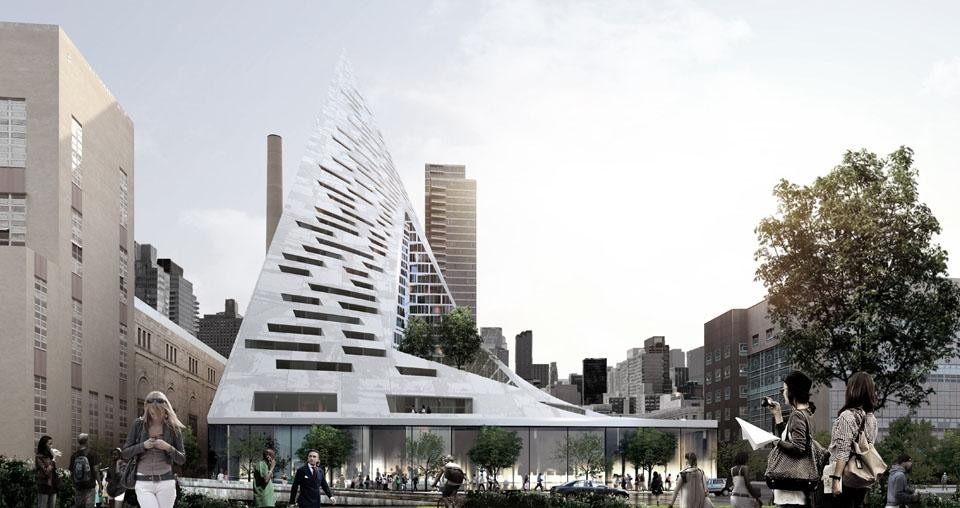
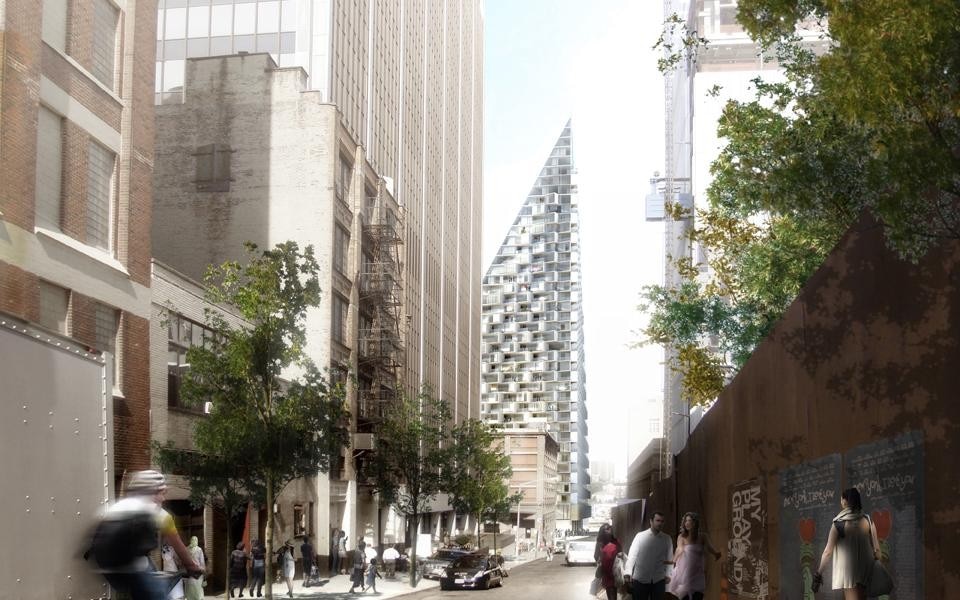
The form of the building shifts depending on the viewer's vantage point. While appearing like a warped pyramid from the West-Side-Highway, it turns into a slender spire from West 58th Street. The courtyard which is inspired by the classic Copenhagen urban oasis can be seen from the street and serves to extend the adjacent greenery of the Hudson River Park into the West 57th development.
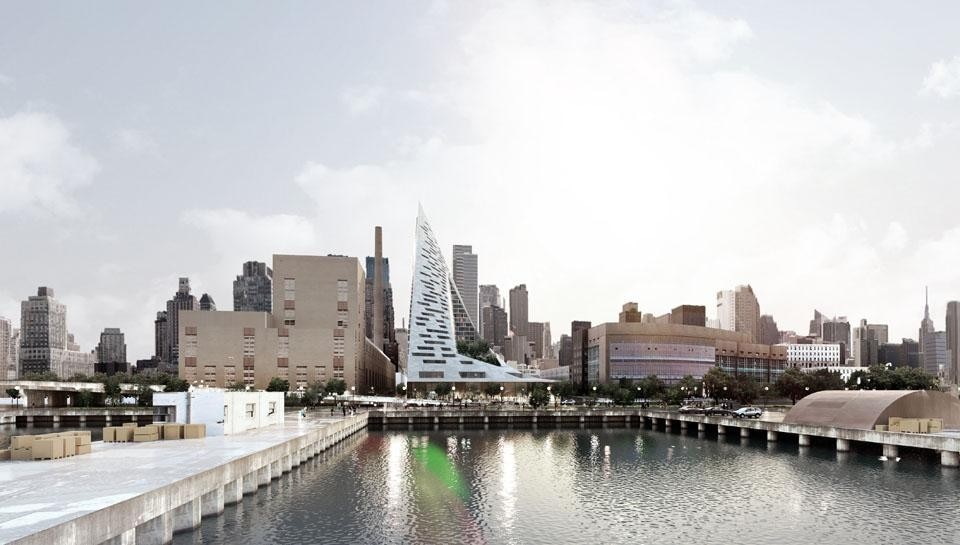
The slope of the building allows for a transition in scale between the low-rise structures to the south and the high-rise residential towers to the north and west of the site. The highly visible sloping roof consists of a simple ruled surface perforated by terraces-each one unique and south-facing. The fishbone pattern of the walls are also reflected in its elevations. Every apartment gets a bay window or a balcony to amplify the benefits of the generous view and balconies which encourage interaction between residents and passers-by. DFR commissioned Copenhagen based BIG in the spring of 2010 to introduce a new residential typology to Manhattan. As of 2011 BIG has opened a new office in New York in order to oversee the development and upcoming construction of West 57th.
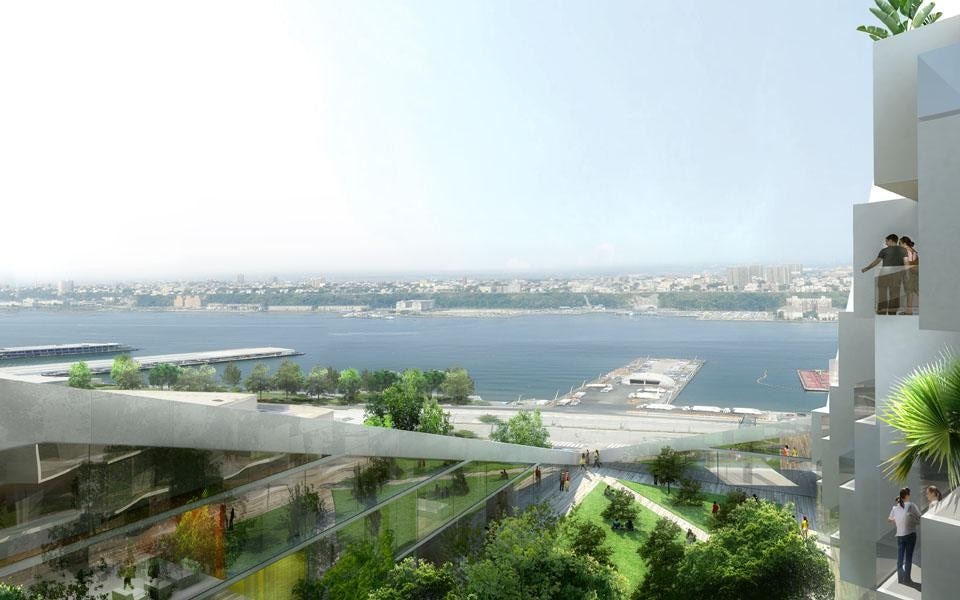
Client: Durst Fetner Residential
Architect: BIG-Bjarke Ingels Group
Size: 870,000 square feet (80,000 square meters)
Location: Manhattan, New York, USA
Status: Direct Commission
Partner in Charge: Bjarke Ingels
Project Leader: Beat Schenk
Project Architect: Sören Grünert
Team: Thomas Christoffersen, Celine Jeanne, Daniel Sundlin, Alessandro Ronfini, Aleksander Tokarz, Alessio Valmori, Alvaro Garcia Mendive, Felicia Guldberg, Gabrielle Nadeau, Ho Kyung Lee, Julian Liang, Julianne Gola, Lucian Racovitan, Marcela Martinez, Maria Nikolova, Minjae Kim, Mitesh Dixit, Nicklas Rasch, Riccardo Mariano, Stanley Lung, Steffan Heath, Thilani Rajarathna, Xu Li
